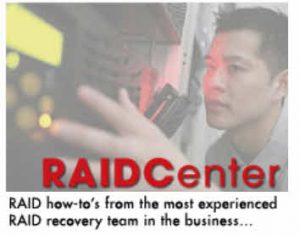
Ask a question, request a quote or check recovery status. Call us.
We are ready to help you recover your data 24 hours/day, 7 days/week!
Tape Recovery Services
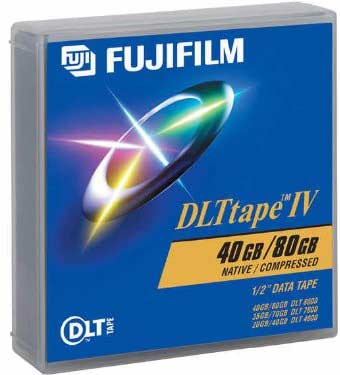 Backup Tape data loss is one of the most frightening data recovery situations many businesses encounter, and the reason for this is obvious. In many cases, the tapes which have experienced the loss are important backup tapes – 75% of all tape data recovery jobs we encounter are for current and recent critical systems backups.
Backup Tape data loss is one of the most frightening data recovery situations many businesses encounter, and the reason for this is obvious. In many cases, the tapes which have experienced the loss are important backup tapes – 75% of all tape data recovery jobs we encounter are for current and recent critical systems backups.
So what happens when your RAID or server’s tape backup fails? What happens when it appears your tapes are toast? It’s always best to trust an expert.
Click here for a Backup Tape data recovery assessment.
Common Tape Failure Issues
Data Corruption: By far the most common issues that cause the need for backup tape recovery tend to fit under “data corruption”. This corruption can be the result of old or overused tapes, accidental overwrites and mishandling or formatting the incorrect tape.
Physical Tape Damage: With age, you are much more likely to experience broken tapes, the key physical damage type for DLT and LTO backup tapes. Of course, flood or fire, much like disaster hard drive data recovery, are also major causes of physical backup tape damage.
Obsolescence, Software Incompatibility: Backup tape drives and cassettes can get pretty old and still provide solid backup value. But what happens when newer systems stop reading the tape data?
Backup Tape Types Recovered
As a data recovery company with roots in the late 1980s and early 1990s, we have seen, recovered, migrated and cataloged data from a vast array of tape types and formats. We can easily handle and provide tape data recovery for:
LTO Tapes – One of the most popular magnetic style tape storage types, LTO, or Linear Tape-Open is one of the easiest to work with, and comes with the bonus of high level encryption technology, which guarantees extraordinary data protection.
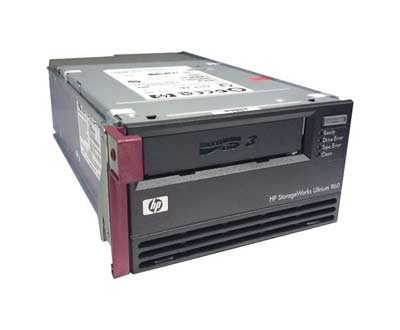 DLT – Also known as Digital Linear Tapes, these were developed by the old Digital Equipment Corporation, and later purchased by the Quantum Corporation. There is also a high capacity format out there in the wild, the Super DLT.
DLT – Also known as Digital Linear Tapes, these were developed by the old Digital Equipment Corporation, and later purchased by the Quantum Corporation. There is also a high capacity format out there in the wild, the Super DLT.
DAT – Digital Audio Tape is a great format that really never caught on with audio enthusiasts, but does offer a reliable and cost effective way to make backups. The capacity and efficiency here are its main strengths.
QIC – We don’t see a ton of these, but the “Quarter Inch Cartridge” have been around for 50 years now! Businesses will often use QIC for long term data storage, because of the format’s low cost.
DC2000/Travan TR1, TR2 and TR3-TR7 – This is another low cost backup data format, which offer a great, secure backup format. Unfortunately, accidental deletion can be an issue with these.
Data8 or D8 – Reliable older technology still used for backing up data. Capacity can be limited with these, but they are robust.
4mm DDS – QIC and DAT are typical 4mm backup data tapes. These are low cost and still widely available, and remain quite popular.
Write Once, Read Many or WORM – As the name denotes, these cannot be used more than once, but do preserve data for immense periods of time because of it.
Other Backup Formats Of Note
We have experience recovering data from tape in all formats, including LTO formats (LTO1, LTO2, LTO3 and LTO4), DLT formats of all varieties (including Super DLT, DLT 8000, DLT II-IV), Sony AIT formats and 1/2 Inch Open Reel and cartridges. Chances are, if it’s backup tape or media, we’ve worked with it, and recovered and retrieved important data for our clients.
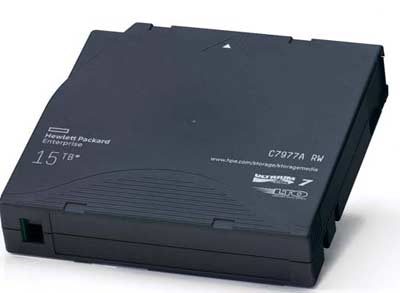 Hard Drive Recovery Group has recovered data from backup tapes since backup tapes have existed in their modern forms. We appreciate that despite the fact that most businesses now backup their MS exchange servers and RAID 5-50 systems on backup RAIDs (the preponderance of extraordinarily cheap hard drives has made this a very inexpensive choice), tapes are still critical.
Hard Drive Recovery Group has recovered data from backup tapes since backup tapes have existed in their modern forms. We appreciate that despite the fact that most businesses now backup their MS exchange servers and RAID 5-50 systems on backup RAIDs (the preponderance of extraordinarily cheap hard drives has made this a very inexpensive choice), tapes are still critical.
Tape Failure Causes
Much like the hard drives found in PCs or RAID array systems, backup tapes have one true weakness: they are mechanical in nature. With moving parts, of course, comes the ability for those parts to break down. For hard drives, it causes physical failure. For RAID systems, it can mean drive loss or RAID errors. For tapes, it can mean anything from snapped tape to accidental overwrites or bad formats.
Tape data corruption is typically caused by simple human error; either during the formatting process or because of accidental overwrites or format problems. The second most common is simply dirty tape drives, or damage caused by physical disasters such as fire or flooding. Either way, professional tape data recovery help is a must if you want your tape’s data returned completely and with professional promptness.
The Tape Data Recovery Process Explained
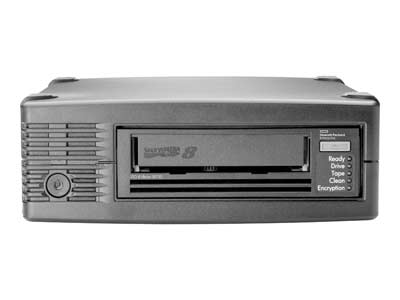 Tape data recovery technicians at Hard Drive Recovery Group have literally seen it all when it comes to saving data on these classic magnetic cartridges. A typical tape data recovery job begins with a physical inspection and full diagnosis of the damaged tape. All tape recovery requests are handled by our engineers in our Class 1000 Clean Room, to prevent any dust contamination, which can derail any tape data recovery from the start.Our tape recovery tools consist of a variety of proprietary solutions that we have perfected over 30+ years of recovering these tapes.
Tape data recovery technicians at Hard Drive Recovery Group have literally seen it all when it comes to saving data on these classic magnetic cartridges. A typical tape data recovery job begins with a physical inspection and full diagnosis of the damaged tape. All tape recovery requests are handled by our engineers in our Class 1000 Clean Room, to prevent any dust contamination, which can derail any tape data recovery from the start.Our tape recovery tools consist of a variety of proprietary solutions that we have perfected over 30+ years of recovering these tapes.
Once safely dismounted, your tape or tape drive is examined thoroughly by our technician, who will quickly determine if the tape must be recovered using our software tools, or with actual physical data recovery. We use imaging tools to create an exact copy of what is on the tape ensure we work with a copy of the data available, instead of the actual tape.
From there, the fully recovered data is typically transferred to the media of your choice. This process can be expedited as well, to ensure your business is up and running as it was in less than 24 hours!
Contact us for Tape data recovery here.
Tape Data Recovery Frequently Asked Questions
My backup tapes are old, and I would like to convert them to a new format. Can HDRG handle this?
Can I migrate my current TSM, Networker or NetBackup to Commvault?
How easy is it to do a backup software migration or to switch backup software products?
A: Yes, Hard Drive Recovery Group has established processes for converting data formats from almost any type of backup tape format. We perform this service quickly, cheaply and efficiently so you can get back to business!
A: The best way to move your backup data to a new environment is simply to restore the tape’s data archives and then extract the data. From there, you can typically easily import the content into the new environment once you’ve recreated the archive structure. Some backup systems even allow you to fully import the older archives completely into the new data structure.
This is not to say that upgrading and changing between archive systems is in any way quick or easy. In fact, restoring and migrating older archive structures can be immensely time consuming. Because each backup system saves data in its own way, it’s important to have strong knowledge of the old AND new backup system BEFORE you begin such a process.
In most of these kinds of migrations it is important to note that file paths may change and client software may not always function as expected. If you are using data dumps or snapshots, you may be starting off on a bad foot. Always feel free to give us a call BEFORE your IT personnel attempt to switch backup solutions – we promise we will be able to at least provide a path so that your migration encounters the least obstacles.
A: CommVault is a great backup storage solution, and one of its key benefits is that you can easily migrate other backup products to it. Using its External Data Connector, it imports metadata stored within the backup, which are necessary to rebuild the TSM, NetBackup or NetWorker storage structure.
This is helpful, as old clients can be transferred to the Simpana client, and inherent the defined policies from the system to be migrated away from.
Of course, it can happen that during migration, hardware or software issues can result in problems that most folks that are not data recovery professionals cannot fix. If your migration to CommVault stops midway, you may find yourself with big, big problems – but don’t worry – our experts can recover the data you lost and complete the migration as if there was never an issue!
A: Well, the answer is that because these products are very proprietary, migrating from one backup software to another is rarely a simple task. Certainly, backup software will have general restore capabilities that can enable you to copy your tape data to a server. However, this does not always work. Switching to another backup software is something almost no products support.
 Remember that this is not always an easy task, and can be time consuming for your IT staff, often with very little return. Consider contacting us or another backup tape migration expert if you are serious about changing backup software applications.
Remember that this is not always an easy task, and can be time consuming for your IT staff, often with very little return. Consider contacting us or another backup tape migration expert if you are serious about changing backup software applications.
Click here for a Backup Tape data recovery assessment.
Contact us here for a free RAID system repair consultation.


